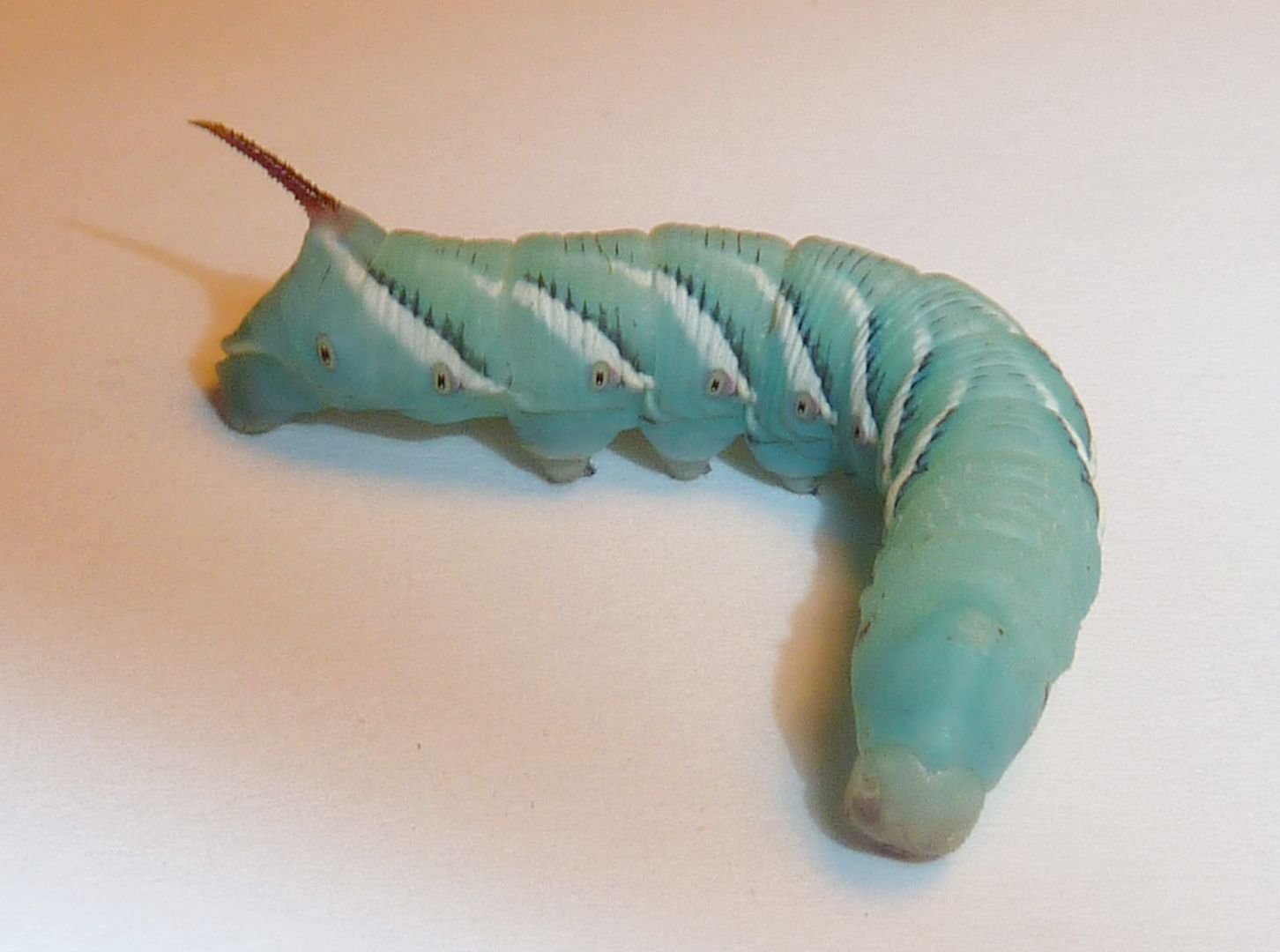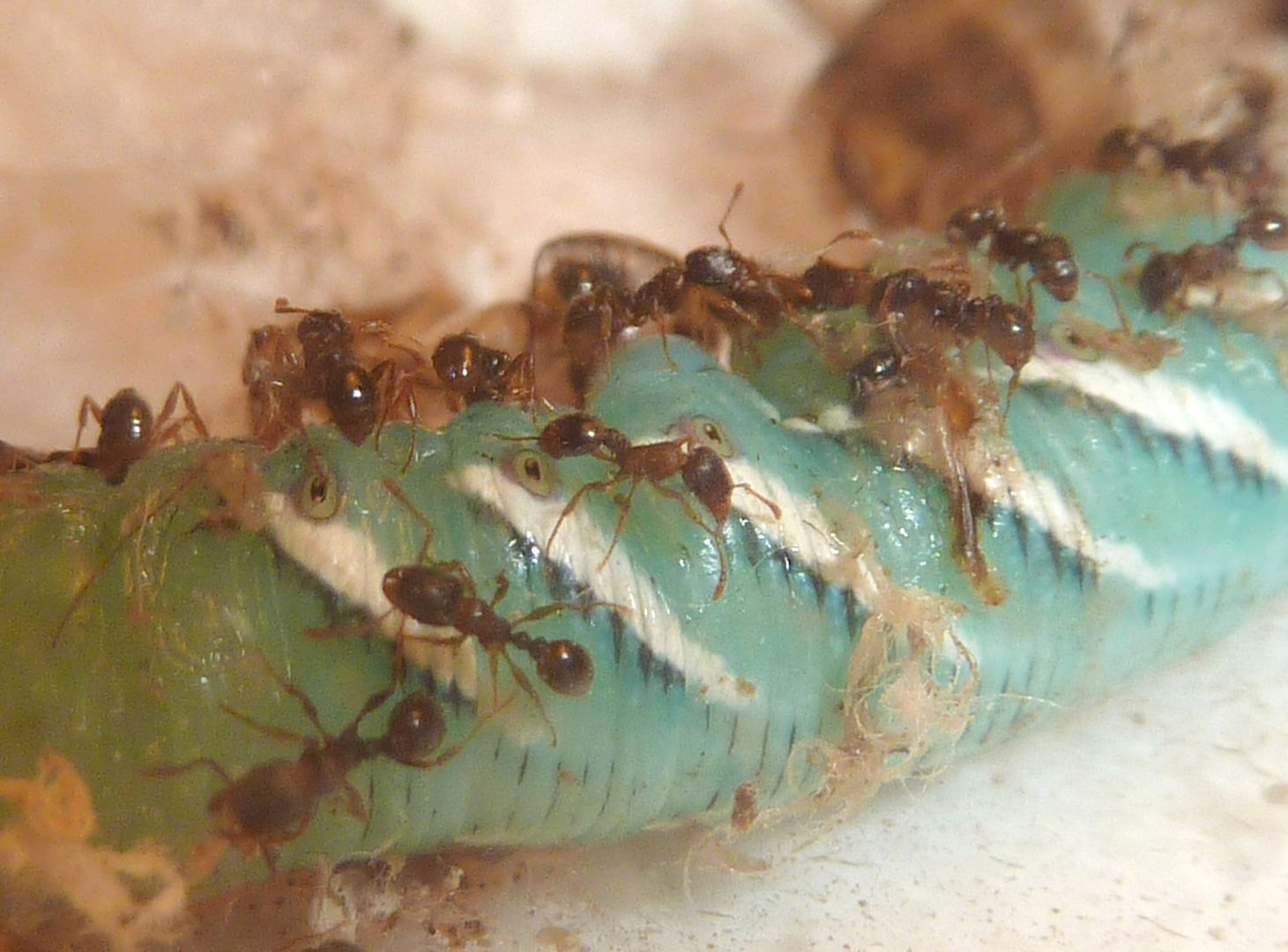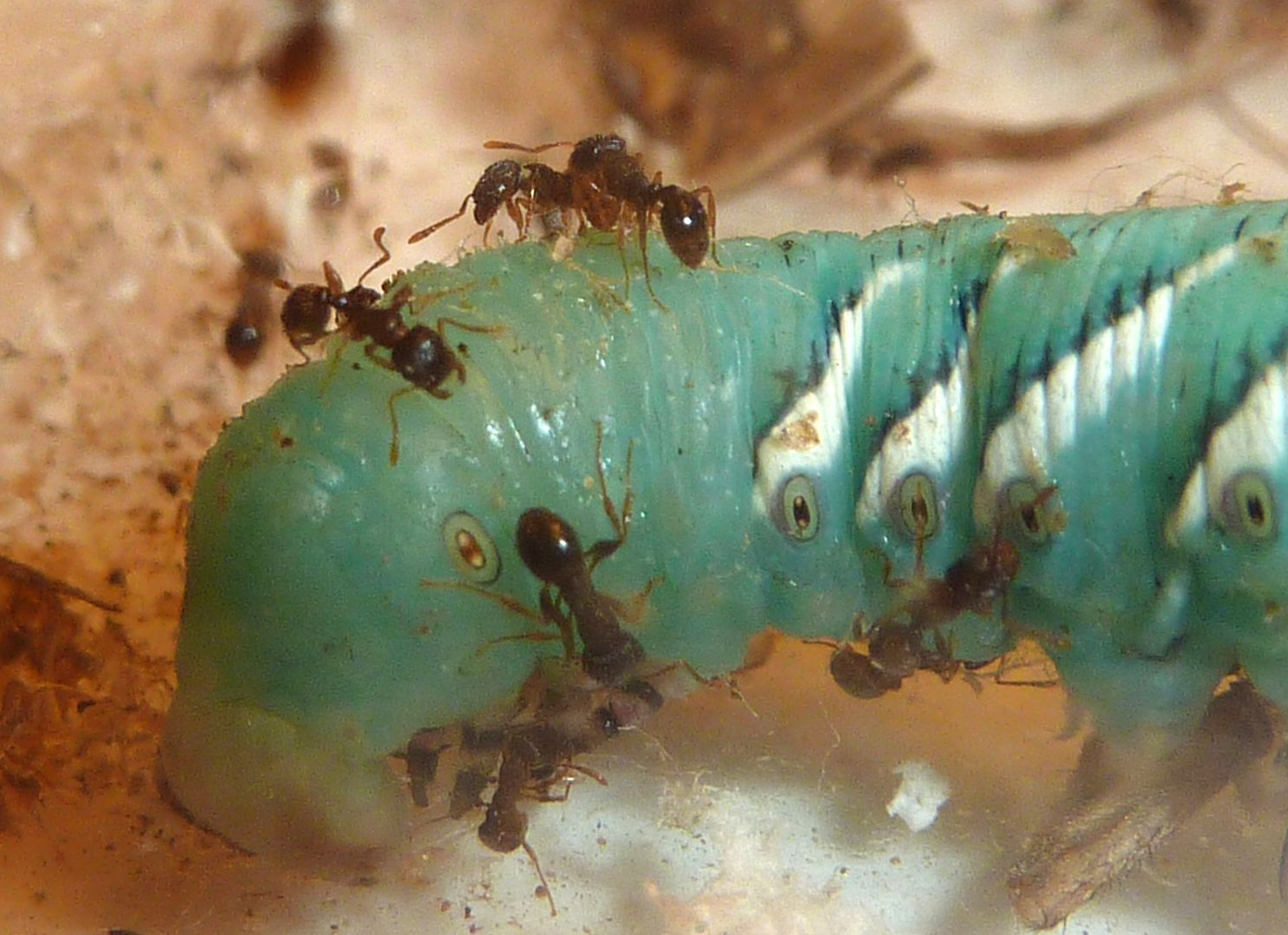When feeding my ant colonies I typically buy $1 worth of crickets. At pet smart this equals about 8, at other pet stores it's as many as 12 or more. Rarely do I end up using them all in one sitting. Once I get home the crickets are promptly put in the freezer to both kill them, and hopefully whatever mites they had. Flesh eating mites are near imposable to get rid of once they infest an ant colony, and even more so for ones in captivity as they lack the ability to change nest locations repeatedly. I've found that most mites don't eat live pray but can be equally devastating by out compete the colony for food once introduced.
After an hour the crickets are removed from the freezer, cut up with scissors and placed into the foraging area. The ants don't actually begin eating until they've warmed up to room temperature. This takes about 15 minutes.
Years and years of this routine have gotten somewhat boring though. I occasionally feed them live ground nesting termites when I can but even then I'm careful about the amount of soldier termites added. I'd never feed live termites to any colony I wouldn't believe could handle them. Young Myrmica queens are an exception as they hunt for pray items, and are on par with owning a pet scorpion. As it's winter time there are no termites to be found outside, so I'm left to entertain other options.
While at my favorite pet store I noticed they started selling Horn Worms, Manduca sp. Fun Fact: I used to think Tobacco and Tomato Horn Worms were the same species. It turns out they're not! M. quinquemaculata (Tomato) and M. sexta (Tobacco) are two species that simply use the same host plants. One internet source says the difference is the Tomato Horn Worm has an additional stripe but I've found that this isn't the case. Considering store bought caterpillars lack their normal pigment I don't think this caterpillar is identifiable at this stage.
Captive fed caterpillars like this are becoming more common in pet stores. I'm told they're safe for consumption by lizards and reptiles etc... because they aren't fed their normal food. Wild caterpillars that have their natural green pigment are quite toxic and stuffed full of nicotine, a natural pesticide. I decided to feed one of these nontoxic caterpillars to one of my ant colonies as an experiment.
I decided on a live feeding to see if they could bring the beast down. The caterpillar put up a good defense bashing the ants off and rolling over them.
It even started secreting liquids at one point that seemed to make the ants stop attacking. It was always hard to make out though, It would glob out as a droplet that quickly soaked into it's skin.
Eventually the ants just started wondering about instead of stinging and biting it.
Slowly the ants called off their assault and stopped bothering with it.
Pavement Ant Colonies (Tetramorium species E.) while invasive don't have the vigor in them to be anything more than a scavenger. However their colonies can displace our native ants through harassment, and excessive territory demands. In the end the caterpillar starved to death and the ants didn't even bother with it's corps. I don't recommend them as a food source to anyone.




